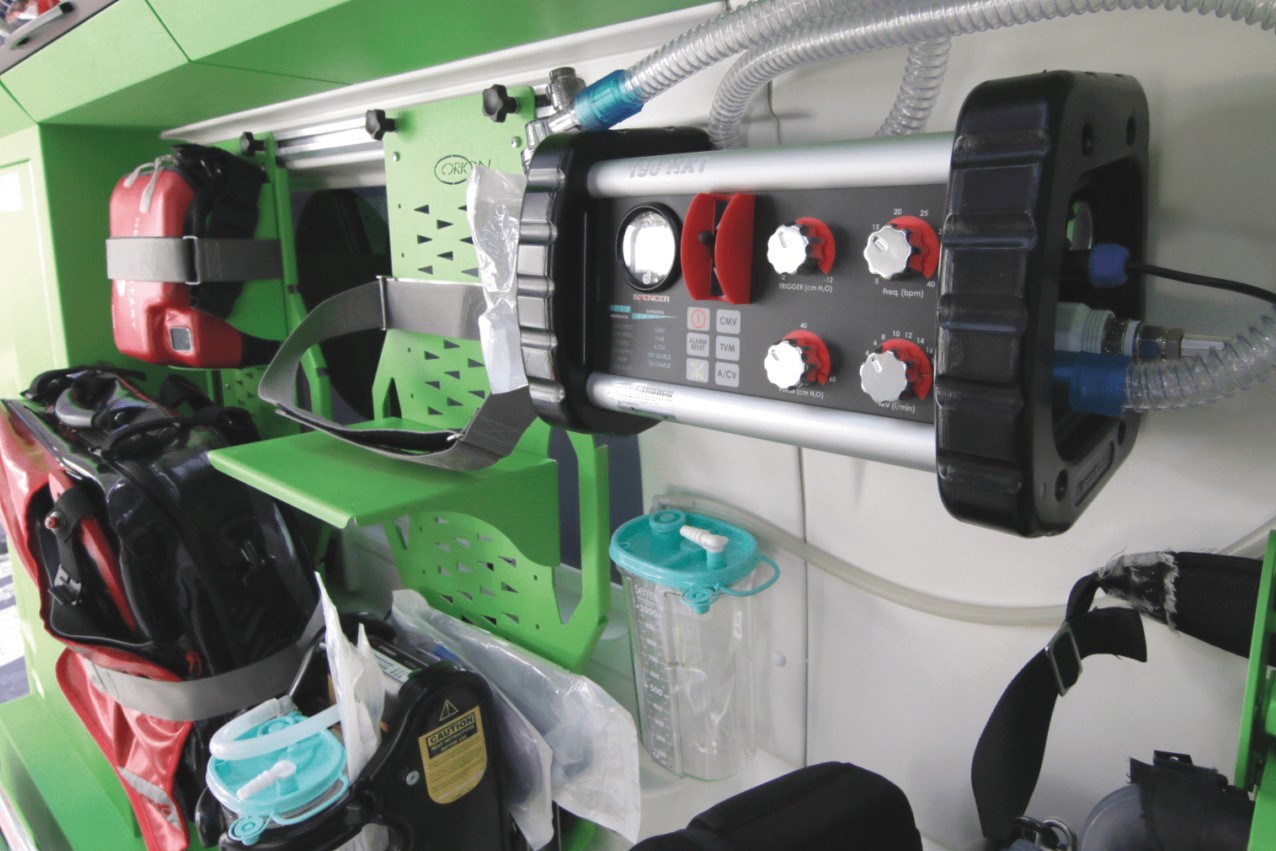
Ventilators, all you need to know: difference between Turbine Based and Compressor Based Ventilators
Ventilators are medical devices used to assist the breathing of patients in out-of-hospital care, intensive care units (ICUs), and hospital operating rooms (ORs)
Ventilators, the different types
Based on the devices used in the application of airflow pressure, fans are classified into two types:
- Compressor based Ventilators
- Turbine based Ventilators
Compressor based
This is the blower which uses a compressor to supply high pressure air during the ventilation process are called compressor based blowers.
Compressor based fans supply the high pressure air with the help of two units; a fan/turbine and an air compression chamber.
The fan/turbine draws in the air and pushes it into the compression chamber.
The compression chamber is a solid tank made of a resistant material to hold the compressed air for a long time.
The air outlet from the air compression chamber to the inlet of the patient air circuit passes through valves controlled by electric actuators.
An electric actuator, technically, is a device equipped with a motor capable of transforming a rotary movement into a linear one: in other words, it transforms energy into movement in many machines.
These electric actuators are controlled by parameter settings provided to the ventilator operator on the control panel.
The parameters to control the electric actuators
- Pressure
- Volume
- Time
Sometimes compressed air cylinders will be attached to the blower to accommodate higher air pressure needs.
Turbine based ventilators
The turbine ventilator extracts the air from the room and pushes it into a small air chamber where the air outlet is connected to the patient air circuit through valves controlled by electric actuators.
The electric actuators are controlled by parameter settings made by the ventilator operator.
Here too air pressure, volume and time are the main parameters.
The turbine fans are of the latest technology: robust and with some user-friendly manufacturing features.
They are less prone to maintenance and service issues.
Ventilators, which is better between turbine based and compressor based?
According to research conducted by physicians and ventilator technicians at a teaching hospital, turbine ventilators perform better than compressor ventilators under conventional circumstances, but compressor ventilators perform better at times of higher air pressure and volume requirements. .
Why are turbine based preferred in some situations and compressor based in others?
Let’s look at the reasons behind choosing a turbine.
Pressure Stimulated Ventilation requires a faster response from the ventilation system during critical patient conditions in the ICU and OR.
The turbine fan reaches the set pressure targets faster than the compressor ones.
The energy requirement of the compressor fan is higher than that of the turbine components, with the exception of the situation when using compressed air cylinders in the compressor fan.
This means that the energy consumption of a compressor fan is higher than that of a turbine.
The airflow activation performance and pressure time product (PTP) criteria are better achieved by turbine-based fans than compressor-based ones.
The production of turbine fans involves lower use of spare parts and less IOT (Internet of Things) complexity than that of compressor fans.
However, the compressor fan remains preferred “when the going gets tough”, so to speak.
Read Also
Emergency Live Even More…Live: Download The New Free App Of Your Newspaper For IOS And Android
Three Everyday Practices To Keep Your Ventilator Patients Safe
Ambulance: What Is An Emergency Aspirator And When Should It Be Used?
The Purpose Of Suctioning Patients During Sedation
Supplemental Oxygen: Cylinders And Ventilation Supports In The USA
Basic Airway Assessment: An Overview
Ventilator Management: Ventilating The Patient
Emergency Equipment: The Emergency Carry Sheet / VIDEO TUTORIAL
Defibrillator Maintenance: AED And Functional Verification
Respiratory Distress: What Are The Signs Of Respiratory Distress In Newborns?
EDU: Directional Tip Suction Catheter
Suction Unit For Emergency Care, The Solution In A Nutshell: Spencer JET
Airway Management After A Road Accident: An Overview
Tracheal Intubation: When, How And Why To Create An Artificial Airway For The Patient
What Is Transient Tachypnoea Of The Newborn, Or Neonatal Wet Lung Syndrome?
Traumatic Pneumothorax: Symptoms, Diagnosis And Treatment
Diagnosis Of Tension Pneumothorax In The Field: Suction Or Blowing?
Pneumothorax And Pneumomediastinum: Rescuing The Patient With Pulmonary Barotrauma
ABC, ABCD And ABCDE Rule In Emergency Medicine: What The Rescuer Must Do
Multiple Rib Fracture, Flail Chest (Rib Volet) And Pneumothorax: An Overview
Internal Haemorrhage: Definition, Causes, Symptoms, Diagnosis, Severity, Treatment
Assessment Of Ventilation, Respiration, And Oxygenation (Breathing)
Oxygen-Ozone Therapy: For Which Pathologies Is It Indicated?
Difference Between Mechanical Ventilation And Oxygen Therapy
Hyperbaric Oxygen In The Wound Healing Process
Venous Thrombosis: From Symptoms To New Drugs
What Is Intravenous Cannulation (IV)? The 15 Steps Of The Procedure
Nasal Cannula For Oxygen Therapy: What It Is, How It Is Made, When To Use It
Nasal Probe For Oxygen Therapy: What It Is, How It Is Made, When To Use It
Oxygen Reducer: Principle Of Operation, Application
How To Choose Medical Suction Device?
Holter Monitor: How Does It Work And When Is It Needed?
What Is Patient Pressure Management? An Overview
Head Up Tilt Test, How The Test That Investigates The Causes Of Vagal Syncope Works
Cardiac Syncope: What It Is, How It Is Diagnosed And Who It Affects
Cardiac Holter, The Characteristics Of The 24-Hour Electrocardiogram


